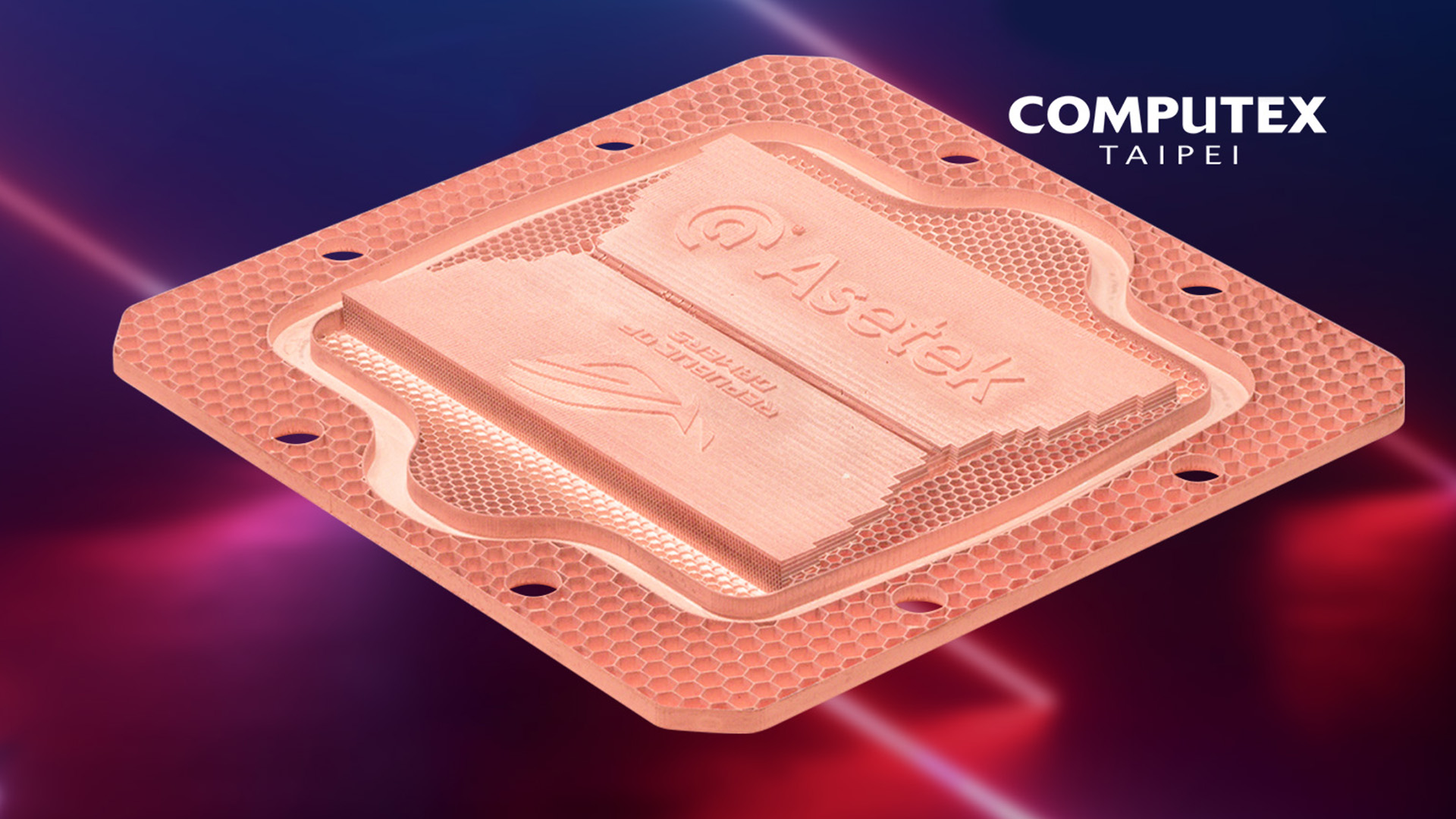Asetek debuts revolutionary AI-optimized ECAM cold plate — constructed using high-resolution 3D metal printing in collaboration with Fabric8Labs
Asetek says its new cold plate performs better than its previous designs

Asetek — renowned for its AIO cooler pump designs — has announced a new exclusive partnership with 3D metal printing manufacturer Fabric8Labs. The pair have announced a new cold plate design optimized with AI, featuring Electrochemical additive manufacturing, drastically improving the cold plate's quality, scalability, and sustainability (recyclability).
Electrochemical additive manufacturing (ECAM) is a manufacturing technique that involves 3D metal printing at room temperature. The manufacturing process involves a water-based feedstock that contains dissolved metal ions, which enables ECAM 3D printers to build metal structures rapidly while improving the product's quality.
This new 3D printing process purportedly allows for complex, high-resolution structures that significantly improve a product's thermal capabilities through enhanced fluid dynamics. ECAM products can be built at higher fidelity, improving the product's performance over more traditional manufacturing techniques.
Not only does ECAM improve product quality/performance, but it also allows for more flexibility. Metal components 3D printed with ECAM can be printed directly onto temperature-sensitive sub-strights such as PCBs, which can speed up manufacturing and allow for fewer components in a product. In Asetek's case, it can now install circuit boards directly behind the cold plate, which could potentially reduce the size of its AIO pump housings. However, this is just a limited example of what it can do. Other issues could make this use case non-viable, such as the circuit board overheating being so close to the cold plate (which is a heat exchanger in and of itself).
In addition to these improvements, ECAM is purportedly more scalable and offers better recyclability than other metal-based manufacturing processes.
Asetek and Fabric8Labs have announced a new cold plate built on Fabric8Lab's ECAM manufacturing process. The new cold plate reportedly boasts all the advantages the new manufacturing process delivers, including better thermal characteristics, compared to Asetek's outgoing designs, which are built with traditional manufacturing techniques.
Sadly, neither party shared any detailed specifications or performance benchmarks for this new ECAM-built cold plate. However, Asetek announced that its "AI-optimized" ECAM cold plate will be featured at Computex 2024 (happening right now) at the Asus ROG booth. Depending on scheduling, we hope to have one of our people check out the booth to see Asetek's new cold plate in action.
Get Tom's Hardware's best news and in-depth reviews, straight to your inbox.

Aaron Klotz is a contributing writer for Tom’s Hardware, covering news related to computer hardware such as CPUs, and graphics cards.
-
Notton I spy with my eye an Asus ROG logo...Reply
Fabric8Labs website has a neat looking example on display.
https://fabric8labs.com/
You definitely cannot do a wave shape like that in a single piece with traditional methods. -
JamesJones44 I feel like I've been transported back to the late 90s, only this time instead of everything being named "NextGen", it's "AI-"Reply -
DougMcC Reply
At least in this case they actually seem to be claiming to have used AI. The pdf doesn't explain but the asetek website at least claims to use AI:JamesJones44 said:I feel like I've been transported back to the late 90s, only this time instead of everything being named "NextGen", it's "AI-"
Now let’s be clear: obviously the cold plate itself is not “artificially intelligent.” However, we did leverage AI to optimize our new cold plate. This means we have employed a sophisticated AI simulation tool to create the cold plate architecture.This results in lower temperatures and, consequently, better performance for your PC. The initial AI optimized cold plate design can deliver 2.3C/100W improvement over current Gen8 AIOs.
